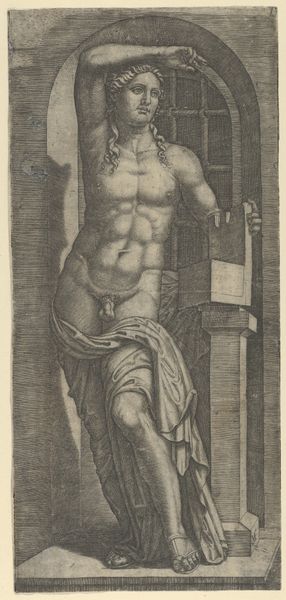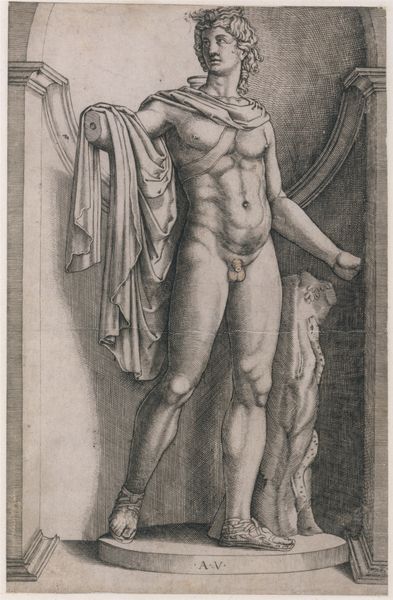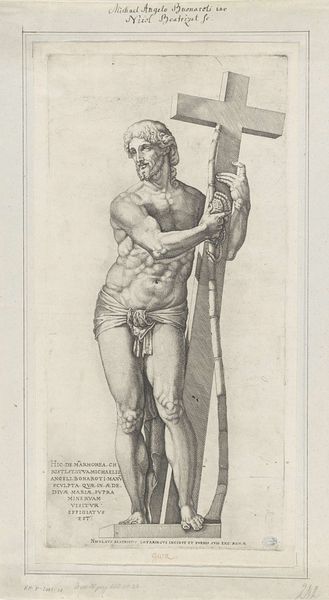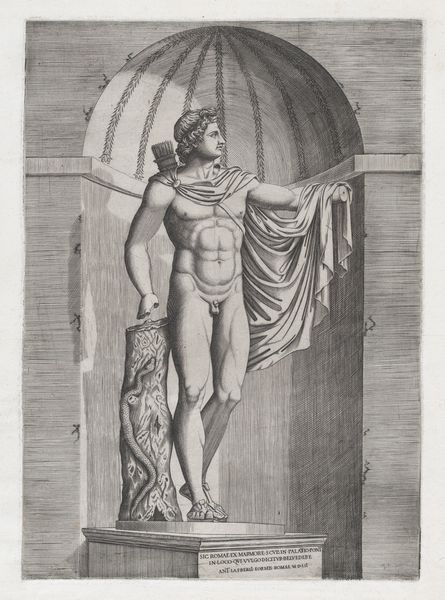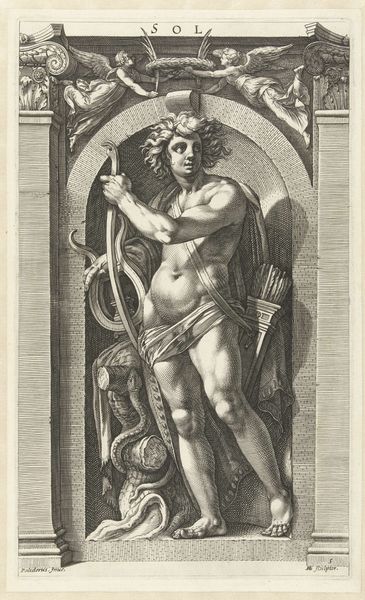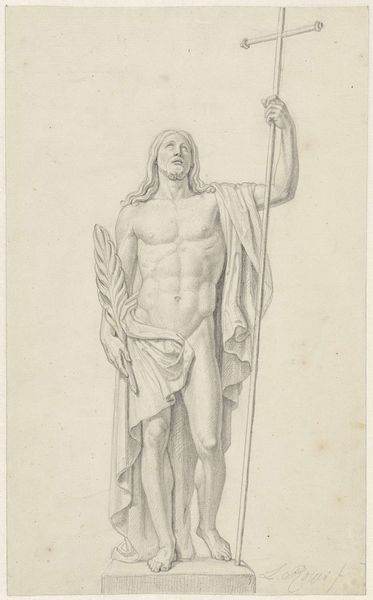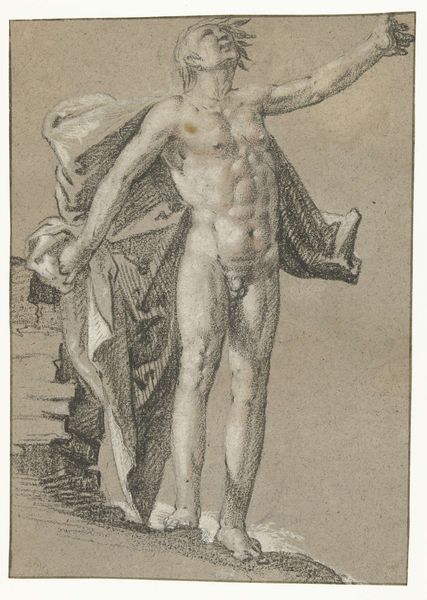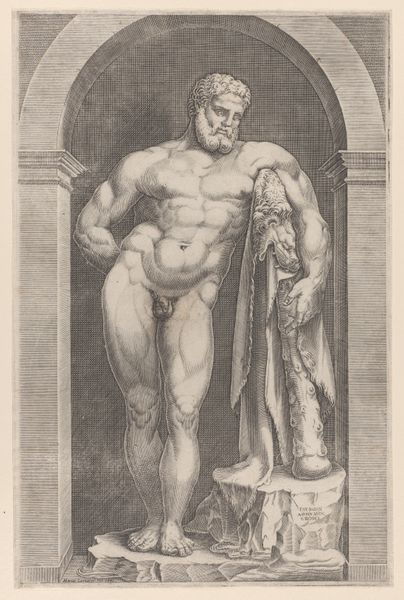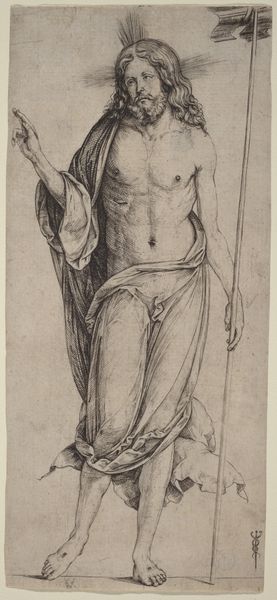
print, engraving
#
pencil drawn
# print
#
pencil sketch
#
charcoal drawing
#
figuration
#
form
#
11_renaissance
#
pencil drawing
#
line
#
history-painting
#
italian-renaissance
#
nude
#
engraving
Dimensions: height 308 mm, width 198 mm
Copyright: Rijks Museum: Open Domain
Editor: This is an engraving from 1552, titled "Beeld van een mannelijk naakt, vermoedelijk Apollo Lyceus," meaning "Image of a male nude, presumably Apollo Lyceus." It's currently housed at the Rijksmuseum, and created by an anonymous artist. The level of detail in the rendering of the body is quite impressive! What stands out to you about this print? Curator: As a materialist, I am drawn to the act of creation here. This print represents the translation of a sculpture, its industrial reproduction in ink that flattens volume. Engravings allowed wider access to classical forms and ideas. The labour involved – the meticulous carving of lines into a metal plate – and its social function, providing affordable access to classical art for a broader audience, that's what interests me. Note too the raw materials—metal plate, ink, paper, and the printing press. Editor: So, you are saying it democratizes art appreciation, allowing people to understand and appreciate art? Curator: Precisely! Prior to the engraving, appreciation would have required access to a physical sculpture or painting. This print, created through industrial methods, spreads the image widely and cheaply. Consider too the consumption of this print – who bought it, how was it displayed, what impact did it have on viewers? It highlights the interplay between production and access. How does focusing on these details affect how you interpret the subject of the engraving, Apollo? Editor: It gives me a completely new understanding! It allows me to analyze the image with both economic and social implications that may have shaped it. Thanks for sharing the lens with me. Curator: And thank you, your curiosity helps bring such pieces alive.
Comments
No comments
Be the first to comment and join the conversation on the ultimate creative platform.
